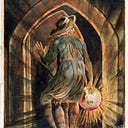More Divine than Human
Author and Professor of history, Walter Isaacson, has explained how Leonardo Da Vinci’s biographer, Giorgio Vasari, wrote “In this work of Leonardo ( i.e. Mona Lisa) here was a smile so pleasing that it was more divine than human.”
If Mona Lisa’s smile was indeed “more divine than human” might Leonardo have created it using some kind of “devine” technique or might he have used a more modern “recommender system”? After all we don’t know how a divine technique might work but we do know how recommender systems work and Leonardo certainly had what it takes to make one work.
A recommender system would have analyzed hundreds of thousands of smiles until it found one that matched Leonardo’s “preferences”. Recommender systems seek to predict the “preference” a user would give to an item (e.g. a smile). Given enough data about smiles a recommender system could certainly “recommend” one Leonardo might like for Mona Lisa.
According to Vasari “Leonardo kept the real Lisa smiling during the portrait sessions by “employing people to play and sing for her, and jesters to keep her merry, to put an end to the melancholy that painters often succeed in giving to their portraits.” In addition, Leonardo’s Notes include an analysis of smilies ( see here ), some quite similar to the Mona Lisa’s
In “The Creativity Code”, Oxford professor Marcus Du Sautoy explains “the basic idea of a recommender algorithm, “if you like A, B and C included in it’s database and another user indicates A, B and C are also among her favorites and she also likes D then there’s a good chance you would also like D”. So, if using Leonard’s notes on smiles he indicated he liked certain ones, there’s a good chance a recommender system would recommend he use a very similar smile to one contained in it’s database for the Mona Lisa.
I suspect that’s not how Leonardo settled on the smile that eventually came to be know as the “the Mona Lisa’s smile”. In fact earlier in his life Leonardo painted a portrait of Ginevra de Benci which professor Isaacson explains shows the smile that would become “the Mona Lisa’s smile”.
Professor Isaacson continues,
“In painting Ginevra de Benci, Leonardo created a psychological portrait, one that renders hidden emotions. That would become one of his most important artistic innovations. It set him on a trajectory that would culminate three decades later in the greatest psychological portrait in history, the Mona Lisa…. Ginevra de Benci is not the Mona Lisa, not even close. But it is recognizably the work of the man who would paint it.”
It’s unlikely, therefore, Leonardo might have bothered with a recommendation for a smile for the Mona Lisa, especially one that would come from an emotionless machine. From the portrait of Ginevra de Benci on ( circa 1476 ) Leonardo’s paintings are psychological and give vent to his desire to portray emotions something machines are incapable of.
Again professor Isaacson describes it best, “By the end of his career, his pursuit of how the brain and nerves turned emotions into motions became almost obsessive. It was enough to make the Mona Lisa smile.”
